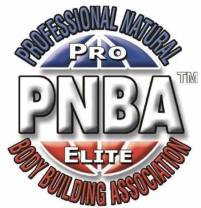Classic Physique
Definition of judges criteria
Basic rules of judges criteria of a natural bodybuilding
for the category Classic Physique
-rules define individual parts of bodybuilding competitions (elimination, pre-judging, finals)
-how the individual parts of bodybuilding competitions are judged
Competition clothing and preparation of athletes
An athlete shows swimwear for approval at the registration. Athletes must wear
uni-coloured black close-fitting shorts without any advertisement. A small logo of a global, European or national organization is allowed, max. size of 8 cm. Shorts must not be patterned nor decorated. Using padding is prohibited.
It is not allowed to wear shoes on stage, watches, bracelets, earrings or metal objects. Competitors, during their presentation on the stage, must not have chewing gum or anything else in their mouth, must not use any props.
Elimination
In case of a higher number of athletes – more than 12 in the category- an elimination is carried out.
The secretary of the head judge gives out The Elimination form to all judges. There are already written down registration numbers of athletes in each category.
A supervisor (or a stage judge) lines the athletes on the stage according to their registration number beginning with the lowest number from the left side of the stage in a row (if necessary, in two rows). Athletes stand in the basic stance. Then they do quarter turns based on the head judge‘s instructions. Consequently,they are instructed to change the stance by exchanging the numbered positions – starting with the lowest registration number from the right to the left and are asked to repeat quarter turns.
After finishing quarter turns, athletes approach the judges according to their registration numbers, no more than five of them, to perform 3 mandatory poses.
-front double biceps
-back double biceps
-abdominals and thighs
Semifinals (Pre – judging)
1st round – Pre – judging
-judging the physique in quarter turns
-judging the muscularity (mandatory poses)
Description of particular parts of the competition
1.round – Pre – judging
Judging the physique (quarter turns, mandatory poses)
A supervisor (or a stage judge) guides the athletes to the stage according to their registration number beginning with the lowest number from the left side of the stage. A moderator or a stage judge introduces all athletes by a registration number and a name. At the command of the moderator or the stage judge, all athletes perform four quarter turns – always one quarter turn to the right.
Judging of the first round follows several criteria:
When judging the physique, an attention must be paid to the symmetrical aesthetic physique prefering the so-called ´V-taper´ – a narrow waist). An athlete´s presentation shall be inspired by the bodybuilding in 60s and 70s. Mass of muscle groups is preferred. Definition of individual muscle groups must not be an extreme one, looking too shredded with inadequate dewatering (minus points).We judge an overall appearance of a sport physique. Judgement is supposed to start from the head through a torso and continue downwards, the whole body must be taken into account. This judgement is supposed to start with the overall physique impression, taking into account the features of the face, the ratio of individual muscle groups, muscle development, state of epidermis and its muscle tonus. It shall be the presentation of a balanced symmetrical physique of an athlete, who acts confidently on the stage.
During comparisons of required mandatory poses, the first we judge, is a demonstration of individual muscle groups .Then the whole physique is judged –starting with the head, torso and each body part downwards. Judgement includes head, neck, shoulders, chest, all the arm muscles, linking pectoral with deltoid muscles, abdomen, waist, thighs and calves. The same applies to the back poses- upper and lower trapezius muscle, broad back muscle, teres major and teres minor and infraspinatus, erector spinae, gluteus, biceps muscles,thigh and back of the thighs, calves. Judges judge the muscular power of individual muscle groups to the proportionality of the body, muscle density, the definition of particular muscle groups, but not an extreme one, looking too shredded with inadequate dewatering (minus points) and overall impression of an athlete.
Demonstration of individual muscle should not be crampy what is frequently performed by some athletes.The athlete’s face should present confidence, showmanship and their pleasure of taking part in the competition. When judging the physique, tightness and tonus of epidermis should also be considered – skin is supposed to be smooth and healthy looking.
Judgement includes an athlete‘s performance since their arrival on stage to the moment when they are leaving.
Judging of muscularity
Mandatory poses
1.FRONT DOUBLE BICEPS
Athlete is facing the judges standing with feet slightly apart, arms are raised sideways and bent at elbow, fists are closed and turned down, which means biceps are flexed, which are the main muscle groups that are judged in this pose. Athlete tries to flex the frontal muscles, judges watch the whole figure. In mandatory pose, the judges first look at the particular muscle group. Then the judge judges the whole figure, they start with the head, through all muscles all the way down. They start with overall impression, then volume of the muscles, their symmetry, mass and their lines.
2.SIDE CHEST
Athletes can choose his preferred side to demonstrate their better arm. He bends the arm closer to judges in 90⁰ angle with his fist clenched and the other hand clasping the wrist. Leg closer to judges is bent and propped with tips of his toes upon floor. Athlete expands his chest by the pressure of the bent arm and, at the same time, flexes his bicep. Athlete also flexes thigh muscles – biceps femoris , and with the pressure put on tips of his toes, he flexes the calf.
3.BACK DOUBLE BICEPS
Athlete is back to the judges and raises his arms sideways and bents them as in pose ´Front double biceps´, with his leg backward and the back leg on tips of his toes. He flexes muscles of his arms, shoulders, upper and lower back, thighs and calves. Arm muscles are judged first, then it continues with the whole figure. In this pose more muscle gorups are judged: shoulders, biceps, triceps, forearm, trapezius, all back muscles, gluteus, biceps femoris and calf muscles. Back double biceps give an opportunity to judge mass, lines and overall symmetry of muscles in more muscle groups.
4.TRICEPS
Athlete can choose his preferred side, leg closer to the judges is slightly bent, back leg is bent more, athlete is on his toes. Both arms are behind his back so the front arm can be flexed. Chest is expanded, abdominals are flexed and so are the thigh muscles and calves. First, triceps muscles and arm muscles are judged and it continues with thighs, calves and also an overall impression from the side.
5.ABDOMINALS AND THIGHS
Athlete is facing the judges, both hands are behind his head, one leg is slightly forward, and he flexes the abdominal and thighs muscles. Judges judge abdominals and thighs muscles as well as lines and overall symmetry of figure.
Judges compare and evaluate at least two and no more than five athletes at a time. The head judge, on his own, can decide to reject or correct the individual requirements of judges for comparison. All individual comparisons will be placed in the center of the stage and in the order from the left to the right as required by judges. Each judge is eligible to submit at least one request for comparisons.
6. CLASSIC PHYSIQUE POSE (free of choice)
An athlete can choose his favorite classic physique pose:
Twisting Back Standing/Kneeling
Victory Symmetry Stance
Front Pose with Vacuum
Front or Back Pose Split Stance
Finals
2nd round– Finals
– posing routines
– muscle development judgement
– common free posing (free posing)
Posing routines
The best five athletes from the pre-judging round advance to the finals. They are led on the stage according to their registration numbers. Each competitor is introduced by his registration number and his name. Athlete performs a posing routine accompanied by music of his choice. Posing routine can last up to sixty seconds. Time counting starts from the first tones of music, not from the start of posing. After a timeout, the music is stopped.
Posing routine judgement
Posing routine is supposed to demonstrate muscularity , definition – not an extreme one, overall impression of a posing routine. It must contain poses typical of the Classic Physique category ( the poses inspired by ´the old bodybuilding´). Judges take into account the artistically performed and well- choreographed posing routine, which must contain required mandatory poses. Prohibited are stances completely lying on the floor, “moon poses” (bending over, bottom to judges) and pulling swimwear up exposing one´s bottom.. The use of props is prohibited. While judging, posing routine and also physique, are taken into consideration.
Muscle development judgement
After posing routines, all the finalists perform simultaneously mandatory poses for judges to compare plus a optional pose inspired by the old bodybuilding. After finishing the last comparison, the head or stage judge prompts the finalists to continue with free posing for 60 seconds to common music. The judges judge only mandatory poses in the finals, free posing is not rated.
Judgement shall be written down into the arbitration tables. The one lowest and one highest score is crossed out. Subsequent evaluation of the pre-judging and the finals multiplied by the coefficient are counted up. Athletes with lower sum of positions are in the final evaluation on a higher position. The winner is the one with the lowest sum of positions. When the sum of points is the same, the final ranking depends on the athlete´s position in the pre-judging, respectively, in the finals.

